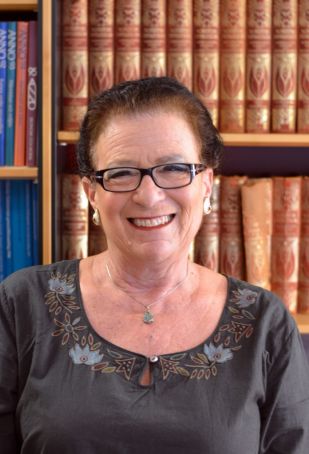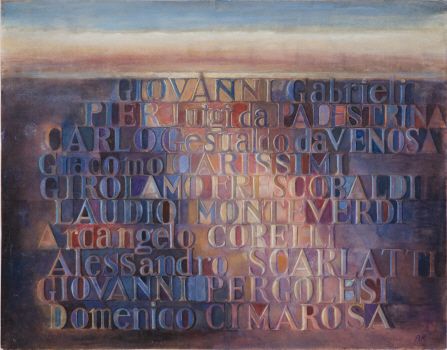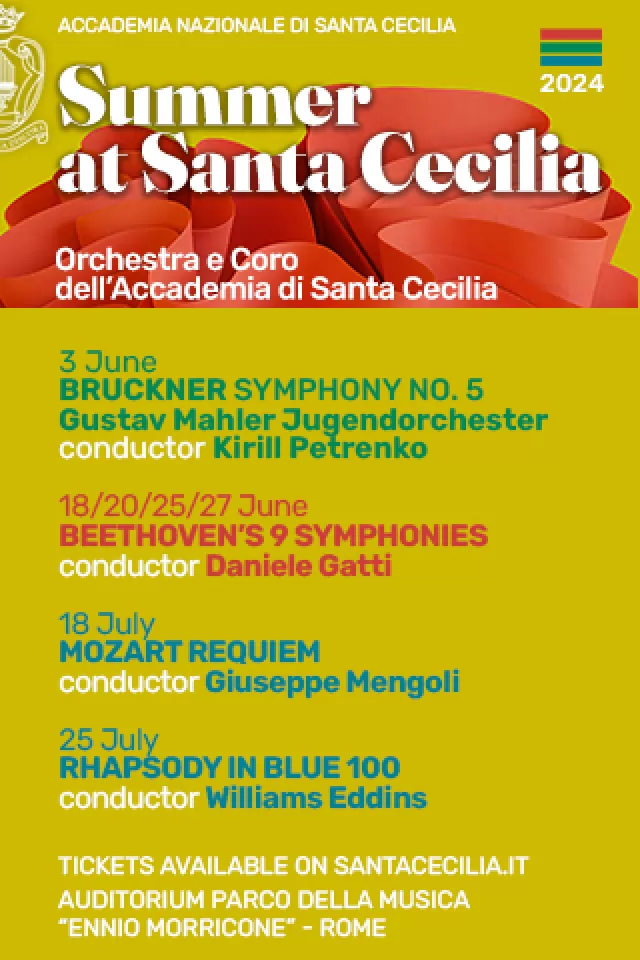From Queen Christina to Anita Ekberg, Swedish women have left their mark on Rome and continue to do so today.
In January, one of Sweden’s best known actresses, Anita Ekberg, passed away after a long life spent mostly in the Eternal City. Ekberg is just one of many prominent women connecting the Swedish community and Rome. Even Sweden's most famous actress, Ingrid Bergman, who would have turned 100 this year, is linked to the city. While married to Roberto Rossellini, director of Roma città aperta, the couple had a house in S. Marinella, a coastal town just north of the Italian capital.
Other Swedish women with Roman connections date further back in history. In 1654 Queen Christina abdicated from the Swedish throne, converted from Protestantism to Catholicism, and decided to emigrate to Italy. The following year she entered Rome through Porta del Popolo and later lived in Palazzo Corsini until her death in 1689. In February this year, Rome celebrated the jubilee of her arrival in the city by dedicating the carnival in her honour.
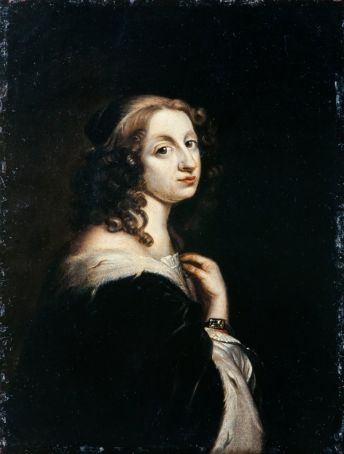
Some 300 years before Christina's arrival, Sweden’s only saint, Holy Bridget or Birgitta, braved a plague-stricken Europe to reach Rome in 1350. She lived in what today is Palazzo Farnese and died in Rome in 1373. Birgitta was originally buried at the church of S. Lorenzo in Panisperna before her remains were returned to Sweden, and in 1391 she was canonised by Pope Boniface IX. Today the S. Brigida al Campo Catholic church in Piazza Farnese houses a convent and hostel run by the Brigidine order of nuns.
The strong role of Swedish women in Rome continues into modern times. Many Swedes living here today are women who have married into Italian society. The ones who take part actively in their community do so mostly through the Swedish School, the church, or through SWEA, a worldwide network of Swedish women who meet to keep in contact with their homeland.
SWEA Rome has around 80 members who participate in the club’s monthly activities, with or without their partners. The organisation is 25 years old and its members are aged from their mid-20s upwards. Even though separation from their home country today is less pronounced than before, members still show a great interest in club's events. “We might fly home more often and with more ease than before, and the internet has made contact with our home country easier, but some activities are important to take part in physically,” says Margot Milani Björck, chair of SWEA Rome.
Not only does it serve as a contact network for Swedish women abroad but it also promotes Swedish culture and language. “Among other things we have a scholarship for a senior university student of Swedish language to go to Sweden for a few weeks,” she added.
Milani Björck is something of the spider in the web in the community as she is also secretary of the Swedish school and a board member of the Swedish Church. The school is a state-funded organisation that provides children who have at least one Swedish parent an opportunity to study the language and the culture. The 55 pupils aged between six and 20 attend extracurricular classes in the evenings, with classes on Mondays, Wednesdays and Thursdays, at three different locations in Rome.
One of the school's most popular annual events is the celebration of S. Lucia on 13 December, a celebration with Italian origins which goes back to the Christianisation of Sweden in the 11th century (it was originally a pagan festival on the longest night of the year before becoming a Christian celebration).
The best known Italian in Sweden is by far S. Lucia. This Italian martyr from Syracuse has over the years lent her name to a festival of light in Scandinavia. Now one of the most important events on the Swedish calendar, the festival features youngsters dressed in white robes and red sashes, carrying candles in procession as traditional songs are sung. On the morning of 13 December most of Sweden stands still as families flock to schools and day-care centres to watch the processions, or to see them visit fire stations, prisons and homes for the elderly.
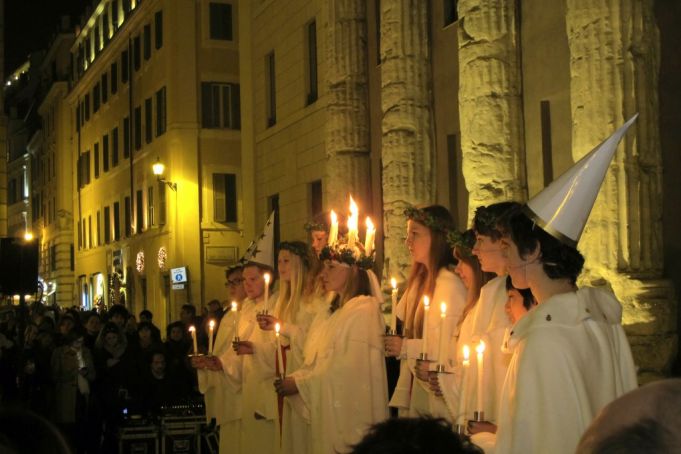
For the last five years the Swedish embassy to Italy has brought S. Lucia back to Rome, and Milan, with a choir which has performed at St Peter’s and other churches around the capital, including a well-attended public concert in Piazza di Pietra.
Apart from S. Lucia, the other annual event organised by the embassy, together with the city's other Nordic embassies, is the Nordic Film Fest, which this year was held from 16-19 April at the Casa del Cinema in Villa Borghese. Now in its fourth year, the event is becoming a tradition and the films screened here are later shown in other film festivals around Italy.
“We like to bring both Sweden's old traditions and modern cultural expression to Italy's Swedish community and the Roman public,” says Sweden's ambassador to Italy, Ruth Jacoby. “As S. Lucia is a Swedish tradition with deep Italian roots, it is a great pleasure to bring her back here and show the event to Romans.”
Up until the 1990s, Italians' first reaction to hearing one was Swedish was always: “AᗺBA”. Nowadays, the first association is always: “IKEA”. Even though it is a brand with such a strong national identity, Åke Ohlsson, store manager at IKEA Anagnina, has had to defend his choice to work together with the Swedish community in Rome. “As a Swede I wanted to feel a connection with the community, and on some occasions I have had to stand up for my point of view to my superiors. I wanted that national touch for our visitors as well as for the staff. I want the employees to feel that they work in a Swedish company.”
One of the cornerstones in the community is the Swedish Lutheran Church in Rome. Located on Via Bertoloni in Parioli, it offers the possibility for residents and visitors not only to attend services but to meet for a chat and a cup of coffee. The church also holds festivities for Sweden's national day on 6 June and the midsummer fest, another former pagan celebration of light, held on the summer solstice. “We say that we should be like home even though we are abroad,” says Per Edler, the church's pastor.
Outside its scheduled activities, the church attracts around 1,200 visitors a year, not including its two busiest events, the Christmas and Easter bazaars. Here one can pick up all the decorations and delicacies necessary for the holiday seasons.
Around the corner in Valle Giulia, close to Piazza Thorvaldsen, sits the Swedish Institute of Classical Studies, which has just shaken off the threat of closure. The Swedish government had wanted to cut its budget, but a public outcry rose to defend the Rome institute as well as its two sister institutions in Athens and Istanbul.
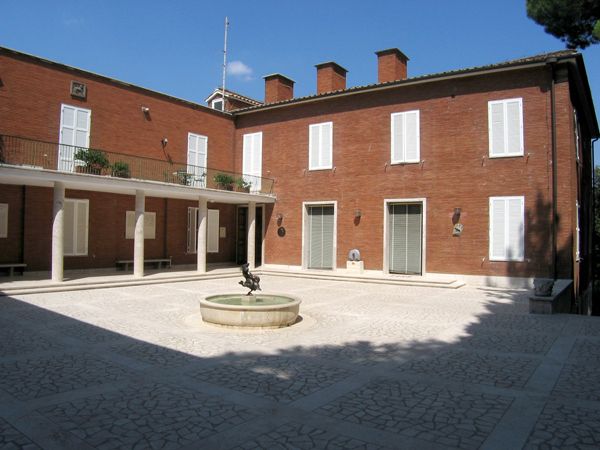
The strict-looking, Nordic classical style building can host up to 20 visiting professors and students in classical art, Latin language, and Roman and Italian history. “We are open to the public, both Swedish and not. If you are interested in Roman and Italian history, we have a fairly large library for your use,” says Kristian Göransson, the institute's director.
The institute holds regular lectures and exhibitions and is also involved in promoting external shows including Vibrazioni dal Nord al Sud, the first major retrospective of the Swedish artist Bengt Kristenson (1920-2004), who came to Rome in the 1960s and lived here for over 30 years.
The exhibition is held across the road from the institute at the Galleria Nazionale d'Arte Moderna (GNAM) until 27 September, and features a vast selection of the artist's varied oeuvres. Kristenson employed many different techniques and materials, from his early ink studies of the human form to his Roman landscape paintings and later work in wood. A highlight of the show is Words as images, his series of framed fish-boxes incorporating old letters and postcards to form art with hidden acronyms, names and anagrams.
Carl Löfvenborg
Swedish contacts in Rome
Swedish Embassy, Piazza Rio de Janeiro 3, tel. 06441941, www.swedenabroad.com/en-GB/Embassies/Rome.
Swedish Church, Via Antonio Bertoloni 1E, tel. 068080474, www.svenskakyrkan.se/rom.
Swedish School
Mon: Scuola Media Statale Umberto Nobile, Via Mura dei Francesi 174, Ciampino.
Wed: Lukasgården, Church of Sweden, Lukasgården, Via A. Bertoloni 1E.
Thurs: St Stephen’s, Via Aventina 3. For details see www.svenska-skolan-rom.com.
SWEA, www.rom.swea.org.
Casa di S. Brigida, Piazza Farnese 96, tel. 0668892596, piazzafarnese@brigidine.org.
This article appeared in the May edition of Wanted in Rome magazine.




